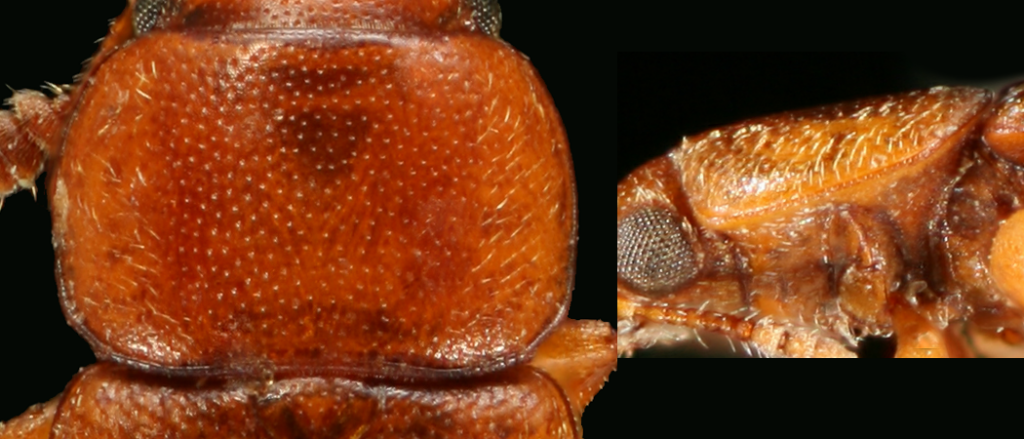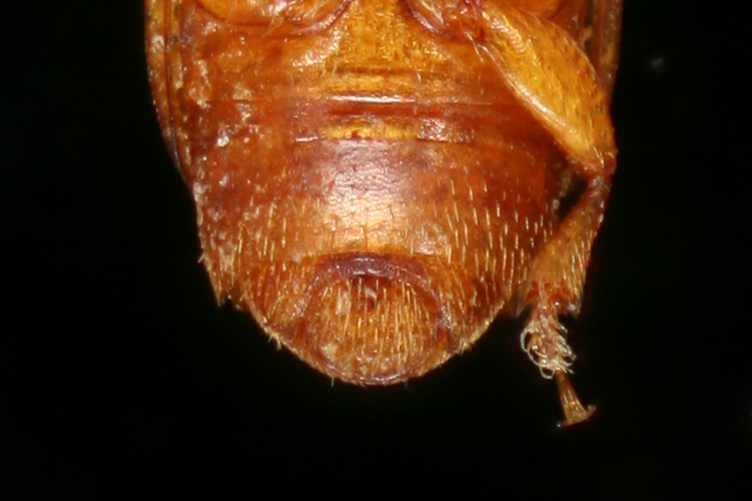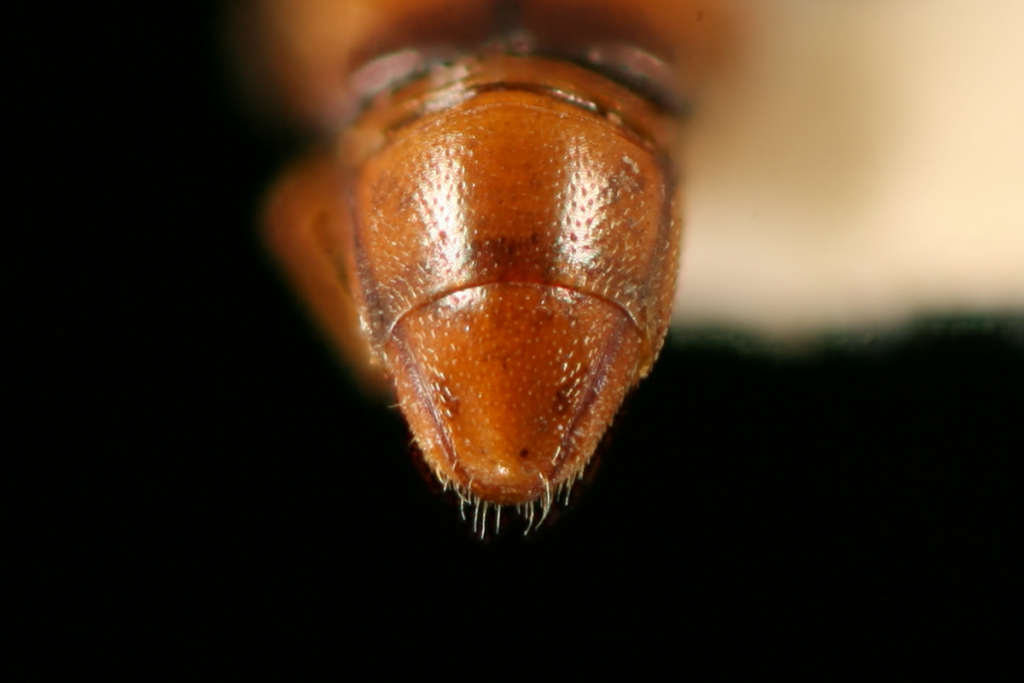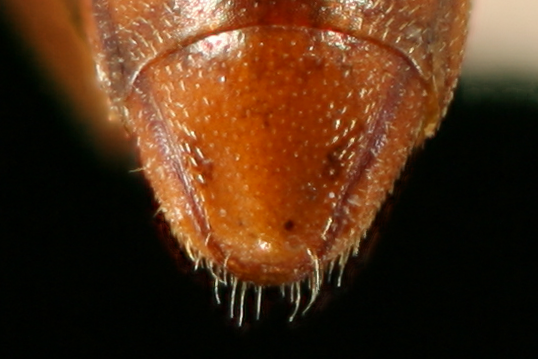Species Fact Sheet
Carpophilus tempestivus Erichson, 1843
Diagnosis: Carpophilus tempestivus specimens are distinguished from other eastern North American species by having the following combination of features: overall body surface glossy and shining, pronotum posterior angles broadly round with no distinct ‘corner’ created (Fig. 2), straight, squarely truncated elytra apical shape (Fig. 1), posterior rim of the mesocoxal cavities smooth and not forming an axillary space, and males having two distinctly longer setae on the supplementary segment while the apical flexion of the female pygidium is upturned medially (Fig. 4 & 5).
Distribution: Carpophilus tempestivus is found in southeastern North America from Georgia to Florida and west to Arkansas to Louisiana. It is also found in Puerto Rico, Cuba, and the West Indies.
Biology: Very little is known about the biology of C. tempestivus. It has been collected male inflorescences of Artocarpus heterophyllus (jackfruit), southern red oak, palmetto fronds, and fallen oranges (Vogt 1951; El-Sawa 1998; Gil 2008; Powell 2017)
References:
El-Sawa S (1998) – collection records
Gil S (2008) – collection records
Powell GS (2017) – collection records
Vogt GB (1951) – collection records
Double-click on images to enlarge
HOW TO CITE THIS WORK:
DiLorenzo, C.L., G.S. Powell, A.R. Cline, and J.V. McHugh (2021) Carpophiline-ID, a taxonomic web resource for the identification of Carpophilinae (Nitidulidae) of eastern North America. (vers. 01.19.2021) University of Georgia, retrieved from https://site.caes.uga.edu/carpophiline-id/




